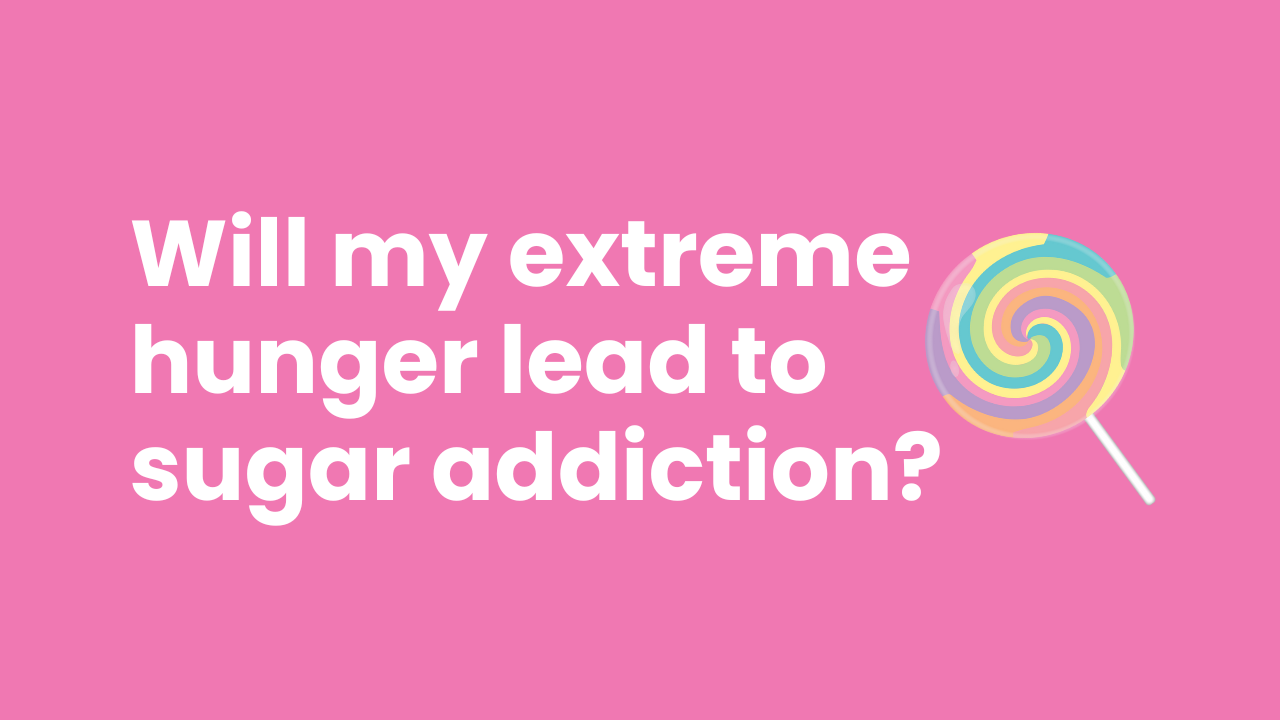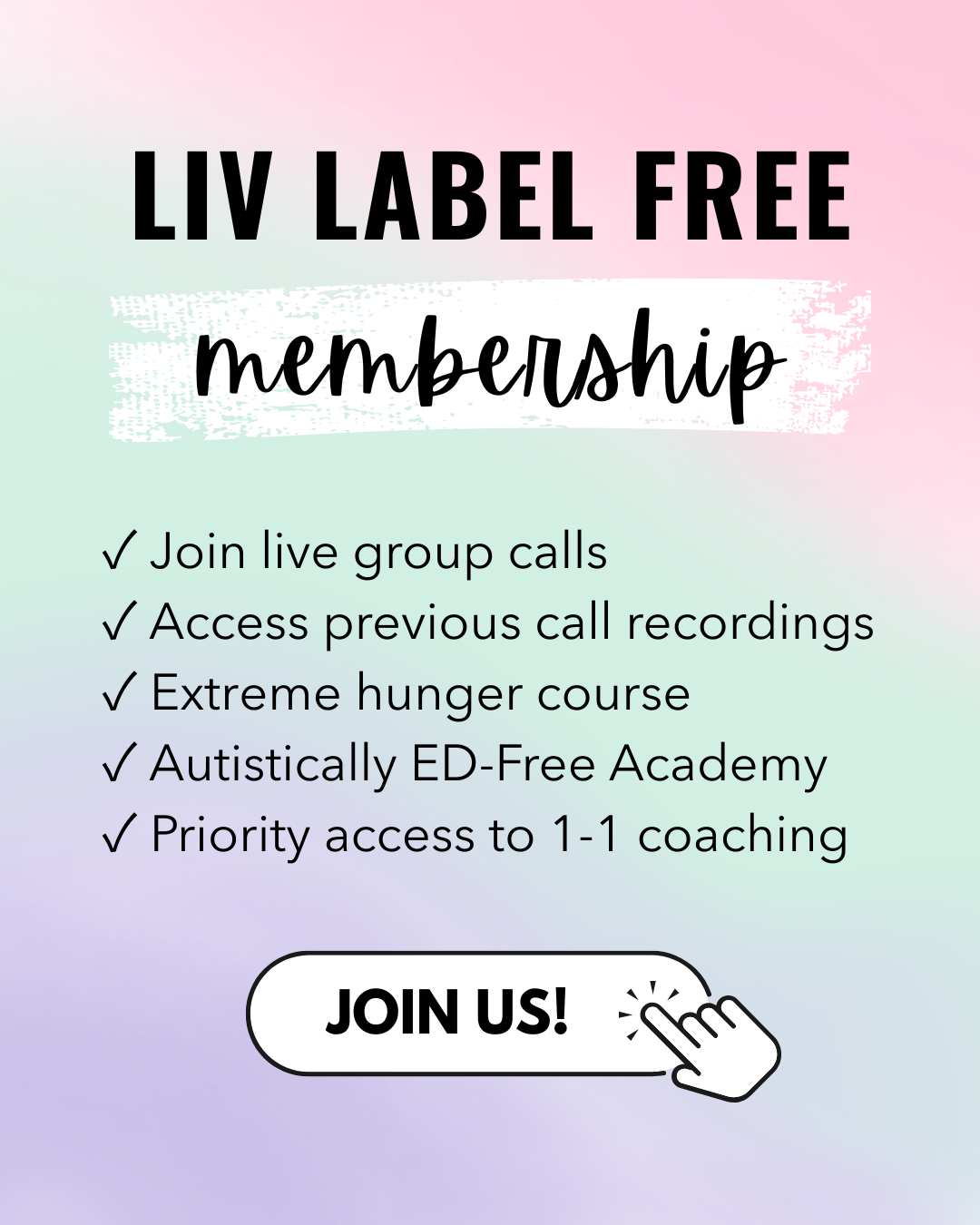Does Extreme Hunger in ED Recovery Cause Diabetes?
Nov 26, 2023
When I was overtaken by the wave of extreme hunger, all I wanted to eat was “junk” food. Cookies, cakes, ice cream, peanut butter, nutella, biscoff, granola, cereal…every single food that had been “off limits” for years was now the only thing I could think about. And not in the “Oh it would be nice, but I can’t have that” kind of way that mental hunger had imprisoned me to.
During extreme hunger, I would literally shovel aforementioned foods (and more) down my throat in milliseconds. With every binge, there was no stopping me. As soon as I’d cracked open the jar of nut butter or pulled open the metallic lining of the Oreo cookies, it was do or die. Eat eat eat eat eat eat eat until my stomach was so distended, so stuffed, so round that all I could do was lay down in agony.
As I would lay there in utter exhaustion, my insatiable cravings had dimmed down only to have sparked a blazing mental fire. I told myself: That was the last time. I’m so out of control. I have no willpower.
These phrases were all rooted in fears. And not just the classic fear of weight gain, growing out of clothes, or being judged by others due to taking on a bigger body, but one of my greatest worries while experiencing extreme hunger was that I was becoming a sugar addict and that I would develop diabetes.
Replacing "Junk" Food with "Healthy" Alternatives
It’s not uncommon to read or hear articles saying how “most people are addicted to sugar these days” and that “the key to preventing sugar addiction is to quit sugar.” As if I hadn’t tried quitting sugar already! I’d avoided sugar for years. As I write about in my memoir Rainbow Girl, I replaced any and all sweets with a “healthier,” light, high-protein version.
Cookie craving? No problem! I’ll just have this delicious Cookies ‘n Cream flavored protein bar instead.
Cake craving? No problem! I’ll just mix a scoop of protein powder with oat flour and almond milk, pop it in the microwave, and say, “Wow! This tastes just like the real thing!”
Nutella craving? No problem! I’ll just make my own no-sugar-no-oil-added version by blending hazelnuts and cocoa powder. “YUM!”
But who was I kidding? I wasn’t fooling anyone…anyone but myself.
The wonderful thing about your body is that it cannot be fooled. When you have survived in a state of famine for however long you were dieting (this includes eating “clean” and forcing yourself to exercise/move), your body makes adjustments to keep you alive. Your metabolism slows, your heart rate slows, and even your ability to think and concentrate lessens.
Why Does Eating More Food Make Me Hungrier?
As famines are a natural part of our evolutionary history, the body is temporarily able to sustain periods of food shortage. When this food shortage becomes prolonged, however, that’s when the body must turn to internal resources for fuel. It starts leaching energy from your bones and organs, and continues to slow down or even shut down systems that are non-essential to life.
When you start eating or are around food, your body receives the signal that food is in fact not scarce, yay! In an effort to re-nourish you as quickly as possible – and therefore repair the damage that has been done due to malnutrition – the body will crave nutrient-dense foods.
Carbohydrates, which are broken down into sugars in the body, are absorbed quickly and easily, making them the ultimate molecule to get you back to a state of health. On the other hand, fats contain the most calories per unit of volume of all the macronutrients, making them another ideal fuel source. When your body has been deprived, it will crave foods that will rescue you from that deprivation as quickly as possible. So it is only natural that all you want to eat is foods that are high in both carbs and fat!
Why Am I Craving Unhealthy Foods in Eating Disorder Recovery?
From a biological perspective, the healthiest way to overcome extreme hunger is to eat “unhealthy” food. Sound contradictory? That’s only because of the labels diet culture has given certain foods.
According to the Merriam-Webster dictionary, the definition of healthy is “beneficial to one's physical, mental, or emotional state…conducive to or associated with good health or reduced risk of disease.” With this definition in mind, eating any food that is beneficial to your overall health and reduces your risk of disease is considered healthy. So yes, even all the sweets, fried foods, and thousands upon thousands of calories, as these are all being used by the body to build trust!
Fear of Developing Diabetes in Anorexia Recovery
Now speaking of disease, let’s circle back to the fear of developing diabetes, as this is so incredibly common when experiencing extreme hunger. Before unpacking just why this fear is scientifically unfounded, however, it’s important to understand exactly what diabetes is.
As I’m sure you know, there are two types of diabetes: Type 1 and Type 2. We’ll get to the differences in just a moment, but in both types, someone with diabetes cannot make enough insulin. Insulin is a hormone made by islets – clusters of beta cells – in the pancreas that plays a crucial role in regulating blood sugar levels. When you consume energy, your body breaks down the carbohydrates into glucose, which then enters your bloodstream. In response to the rise in blood sugar levels, the pancreas releases insulin, which transports the glucose to different parts of the body. Insulin acts as a "key" that unlocks cells, allowing glucose to enter. Once inside the cells, glucose can be used for immediate energy needs or stored as glycogen in the liver and muscles for later use.
So how does this apply to the two different types of diabetes? Type 1 diabetes is a genetic condition caused by the autoimmune response against pancreatic beta cells, making the pancreas incapable of producing sufficient insulin. Type 1 diabetes is a condition someone is born with, meaning it is often diagnosed earlier in life and requires lifelong insulin therapy to keep blood sugar levels in check. Type 2 diabetes, on the other hand, is developed during someone’s lifetime. It occurs when the body becomes resistant to the effects of insulin or fails to produce enough insulin to keep blood sugar levels balanced.
It’s this second type of diabetes that most people in recovery are afraid of. The fear is that we will become insulin resistant, which means that certain tissues and organs in the body that are responsible for storing insulin, no longer respond to the hormone, therefore resulting in too much glucose – so sugar – in the bloodstream. And it’s prolonged elevated blood sugar levels that can lead to Type 2 diabetes.
Insulin Resistance in Anorexia Recovery
Now you may be thinking “Surely I’m going to develop diabetes, because I’m already developing insulin resistance by eating way too much sugar!” and here’s where the science gets super interesting: having insulin resistance does not directly cause diabetes. In fact, anyone can develop temporary insulin resistance!
An excellent example of temporary insulin resistance is seen in some women while pregnant. During pregnancy, the placenta produces hormones that help support the growth and development of a baby. Some of these hormones, including human placental lactogen, estrogen, and cortisol, can interfere with insulin action in the mother's body, making the cells less responsive to the effects of insulin. As a result, more insulin is needed to maintain normal blood sugar levels. The temporary insulin resistance that occurs during pregnancy is a physiological adaptation to supply an adequate amount of carbohydrates to the growing fetus, which uses glucose as the main energy source.
Similar to a growing fetus, your body requires lots of energy to heal and repair. As you learned, the reason you crave so many carbs – sugars – is because sugar is one of the most efficient fuel sources, and your body is doing its best to get you healthy as quickly as possible! And similar to a pregnant person (ironic as you may joke that you look pregnant while bloated), you may develop temporary insulin resistance during your extreme hunger period (I’m pretty sure I did!). However, just as this insulin resistance resolves itself when a mother’s hormones readjust after giving birth, your hormones will even out as you feed your body back into energy balance!
All that being said, you MUST continue to honor your cravings for sugar if you want to fully recover from disordered eating and make peace with food. Forcing yourself to “reel it in” will not only increase your mental hunger, but it will continue to reinforce scarcity, which will only result in the slowing down of the healing process. Yes, you may develop temporary insulin resistance, but the key word here is temporary! The faster you eat all the sugar, the faster your body will trust you, and the faster you’ll be free. If you want to kickstart your journey to freedom, grab a copy of my book How to Beat Extreme Hunger!
Sources:
- The Pathophysiology of Gestational Diabetes Mellitus - PMC
- Reversal of Insulin Resistance Postpartum Is Linked to Enhanced Skeletal Muscle Insulin Signaling | The Journal of Clinical Endocrinology & Metabolism | Oxford Academic
- Normal Pregnancy- A State of Insulin Resistance - PMC
- Mechanisms of Insulin Resistance during Pregnancy | IntechOpen





